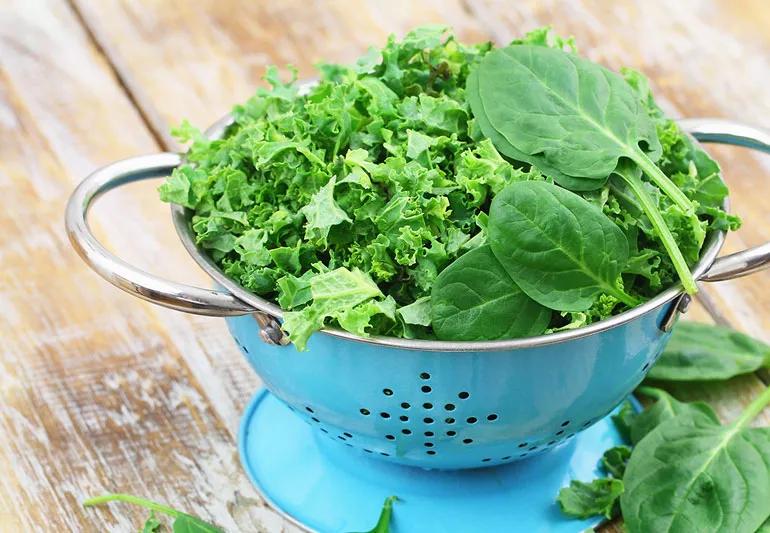Discover which leafy green is better for your body

It’s the battle of the greens and the ultimate faceoff is spinach versus kale. Health aficionados can’t get enough of kale and its signature dark green color, but where does it stack up against its opponent spinach?
Advertisement
Cleveland Clinic is a non-profit academic medical center. Advertising on our site helps support our mission. We do not endorse non-Cleveland Clinic products or services. Policy
Kale and spinach — both “super veggies” — are packed with nutrients because they’re leafy greens, says preventive cardiology dietitian Kate Patton, MEd, RD, CSSD, LD.
From nutrients to health benefits, she helps unfold everything you need to know about this powerful duo and tips for working these leafy greens into your diet.
Kale and spinach are both super veggies loaded with nutrients, but which leafy green should rule when it comes to heart health?
The truth is that both spinach and kale are heart-healthy and are great choices.
“Leafy greens are so good for you that you really can’t eat too many,” says Patton. “In fact, they’re considered heart-healthy superfoods.”
Spinach is not only great for your heart, but it helps boosts eye health, helps reduce blood pressure levels and it helps prevent cancer. Not only that, but it boasts more fiber, protein and vitamin A than kale and is also higher in calcium and iron.
On the other hand, kale crushes spinach when it comes to vitamins K and C, plus it’s also lower in calories and richer in heart-healthy flavonoids. These flavonoids are packed with anti-inflammatory and anti-carcinogenic properties.
“Truly, you can’t go wrong with either choice,” she says. “As a bonus, both contain omega-3 fatty acids. This helps fight the inflammation at the root of heart disease and other chronic illnesses.”
Advertisement
Kale’s pungent, slightly bitter, peppery taste stands on its own very well — steamed, sauteed or baked into yummy kale chips. If you find kale’s taste a bit strong, look for blends of kale with other greens or try milder baby kale. Don’t forget to remove the tough middle part so you don’t get a bitter taste in your mouth after chewing on it.
While cruising through your local produce aisle, look for dark green leaves that are free of brown or wilted leaves. The firmer it is, the better.
When it comes to spinach, there’s a variety of ways you can prepare (or drink!) it. Spinach can be tossed fresh in a salad, layered in a wrap or sandwich, or added to just about any dish. Its fairly mild flavor complements eggs, pasta, rice and beans. Add spinach to soups or chop it and mix into burgers and sauces. Plus, try throwing it into your favorite smoothie for added benefits. Don’t worry, you won’t be able to taste it.
“All leafy greens are packed with vitamins, minerals and other nutrients, so don’t limit yourself to spinach and kale,” says Patton. “Think about adding collard greens, mustard greens, Swiss chard and turnip greens to salads and soups, or prepare them as a tasty side.”
Advertisement
Learn more about our editorial process.
Advertisement

Eating this root vegetable can help support your eye, heart and brain health

This fermented cabbage is full of probiotics and fiber, and can help your gut, heart and brain health

This root veggie can also benefit your gut, heart and eyes

As the stalky vegetable breaks down, it leaves behind sulfuric byproducts that can make your pee stink

Most of the time, beeturia is a curiosity, not a concern

This cruciferous veggie boosts your bone, eye and heart health and contributes to a lower risk of cancer

Some diets shun them, but research hasn’t concluded that they’re harmful

This versatile type of seaweed may help support weight loss, bone health and cancer prevention

The best parenting style balances enforcing rules and showing plenty of love

Tips include cutting back on sugar, focusing on exercise and managing stress

It can be harder to let go when you’ve invested time, energy and emotions — but it might be the healthier choice long term